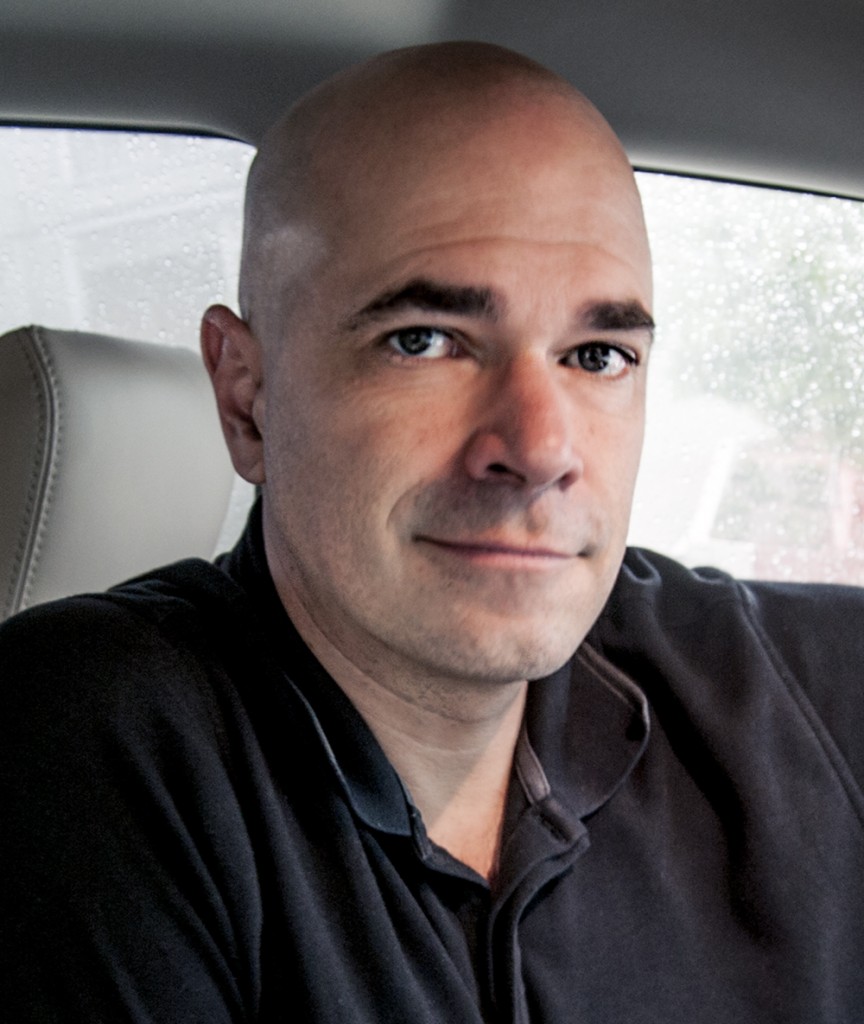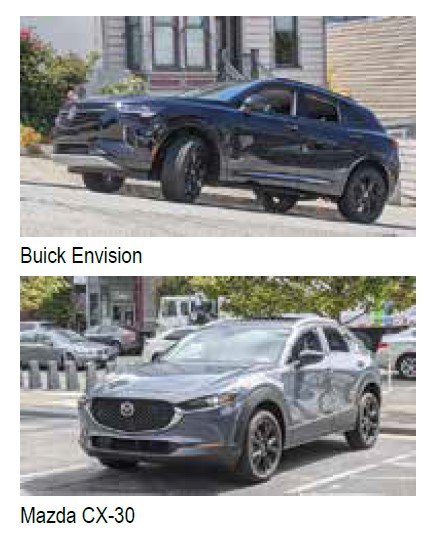
By Philip Ruth–
“Wouldn’t you really rather have a Buick?”
That jingle debuted in the mid-Sixties. Mazda’s equally sticky slogan debuted about 15 years later: “The more you look, the more you like.”
Today, those promotions mean different things. Modern-times Buick is nothing like what Generation X and earlier generations remember about it, while the Mazda slogan still holds true—for both vehicles in this month’s comparison.
As usual, we’re measuring across market segments. The Buick Envision is a compact SUV, while the Mazda CX-30 occupies its own space between the recently canceled subcompact CX-3 and the CX-5, which aligns more closely with the Envision.
Exterior dimensions flesh out the differences. Driving in San Francisco places a higher value on narrow cars that can slice through traffic. The CX-30’s 70.7-inch width cuts a finer path than the Envision’s 74.1, and the Mazda’s 173-inch length makes it more parkable than the Buick’s 182.5-inch stretch. Ten inches is a lot in urban parking, but the Envision is still within the footprint of a Corolla or Civic compact sedan, so either could potentially be your effective city errand runner.
Inside, the CX-30 has more front legroom, and the other dimensions fall as you’d expect, with the Envision posting grade-higher capacities. Both kill it with rear-seat legroom—more than 36 inches in the Mazda, and more than 39 in the Buick. Those are mid-size to large-car numbers.
Both the Envision and CX-30 can be had, as my test cars came, with a styling vibe best characterized as “glossy blackout.” The Envision’s “Ebony Twilight Metallic” amped up the drama with full-midnight impact.
The Buicks in the band-camp carpool were bulky affairs with mashed-potato suspensions. This Envision is the opposite, with a platform originally designed for European markets. This places Buick in the realm of Audi and BMW in terms of providing a communicative Teutonic feel.

Drive the Envision with spirit, and the steering wheel talks back with road feel, and the engine, transmission, and brakes all work well while still adhering to an enthusiastic sensibility. It’s capable and satisfying, and the Envision never mutes out. There were times I felt the Envision expressed more to me than some recent BMWs I’ve driven.
The Mazda is also fun to drive, in this case because it’s so deliciously refined. Everything you do in the CX-30 seems to have been already dialed in, to thread the needle more cleanly than you could anticipate. Supreme confidence and gratifying silkiness move the CX-30 forward. Both the Envision and CX-30 were among the rare crossovers I actually looked forward to driving.
Pricing will fall in line with competitors: this mid-level Envision Essence started below $36,000 and after options climbed just over $41,000. The CX-30 Turbo Premium Plus had fewer features and a correspondingly lower ask of $34,120. Both charged exactly $495 for their premium paint jobs.
In the past, Buick and Mazda were dissimilar; now their products have mirrored appeal, with different executions. Both are worth a look.
Philip Ruth is a Castro-based automotive photojournalist and consultant with an automotive staging service.
Published on July 15, 2021
Recent Comments